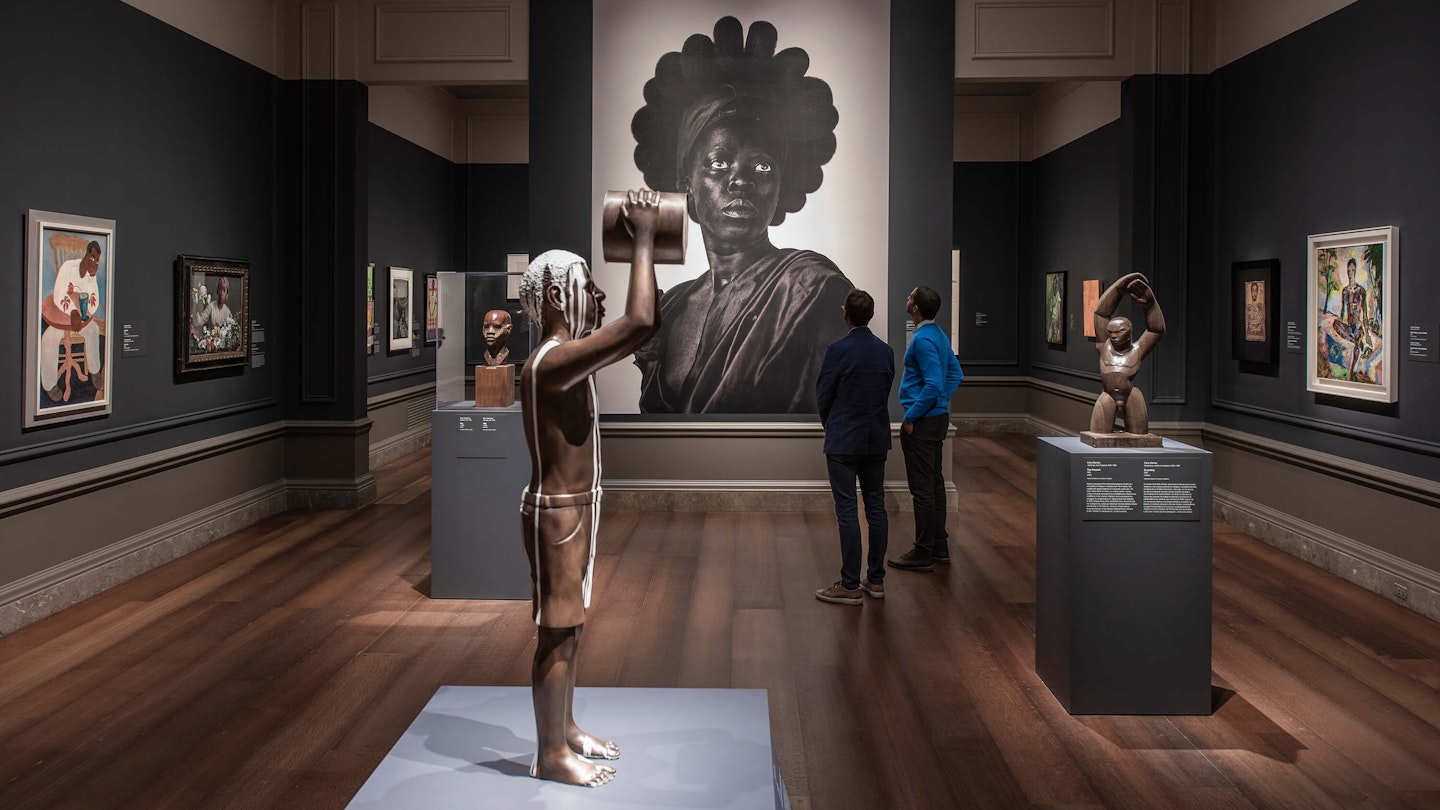Afro-Atlantic Histories Exhibition at National Gallery of Art
After a successful showing at the Museum of Fine Arts, Houston, a groundbreaking exhibition, “Afro-Atlantic Histories,” has opened in Washington, DC. This exhibition offers an extensive look at the history of the transatlantic slave trade and its profound effects on the African diaspora.
On display in the West Building of the National Gallery of Art through July 17, “Afro-Atlantic Histories” features over 130 pieces—ranging from paintings and drawings to sculptures and multimedia artifacts. These works span from the 17th to the 21st centuries and are created by artists from 24 countries across Africa, Europe, the Americas, and the Caribbean.
Prominent Artists Highlighted
The exhibition showcases significant contemporary figures such as Kara Walker, Hank Willis Thomas, and Ibrahim Mahama. Additionally, it honors historic artists including Frans Post, Jean-Baptiste Debret, and prominent 20th-century painters like Alma Thomas and Romare Bearden.

Exhibition Collaboration and Importance
This exhibit was organized in collaboration between the National Gallery of Art and the Museu de Arte de São Paulo in Brazil, where it originated in 2018. Washington marks the first stop on a national tour, with further exhibition locations, including the Los Angeles County Museum of Art, to be announced later.
NGA director Kaywin Feldman emphasized the importance of this exhibition in shedding light on the complex histories that shape our understanding of slavery’s legacy across the Americas. Consequently, the exhibition aims to celebrate the ongoing influence of the African diaspora on both sides of the Atlantic.
Thematic Exploration
The exhibition is divided into six key themes, which include:
- Maps and Margins: Early slave trade connections between Africa, the Americas, and Europe.
- Enslavements and Emancipations: Focused on rebellion, escape, and abolitionist movements.
- Everyday Lives: Examining daily life in various Black communities.
- Rites and Rhythms: Celebrations and ceremonies across the Americas and Caribbean.
- Portraits: Featuring Black leaders from the 18th and 19th centuries, alongside lesser-known artists.
- Resistances and Activism: Addressing movements for equal rights and freedoms.

The Significance of Representation
Curator Kanitra Fletcher stated the importance of recognizing the diverse experiences of Black cultures, stressing that a significant number of enslaved Africans did not settle in America but traveled to South America and the Caribbean instead. This correction is essential to understanding the intertwined histories that shape global culture today.
Fletcher further noted that Black cultures are often mistakenly seen as counter to European culture; however, this exhibition illustrates their deep interconnection, highlighting that without the influence of Black individuals, modern Western culture would not exist in its current form.

Conclusion
The “Afro-Atlantic Histories” exhibition serves as a powerful reminder of the shared experiences that unite diverse cultures and histories. Visitors can expect an enriching journey through artistry and profound narratives of resilience, survival, and cultural contributions that resonate through our collective history.




